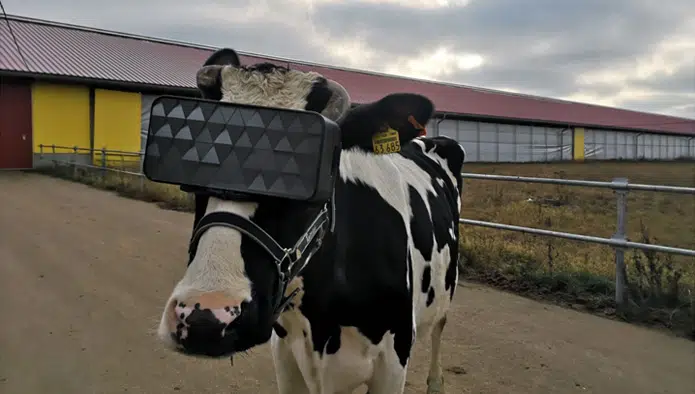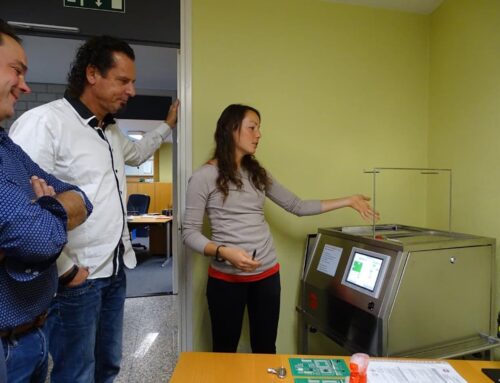Farmers are indispensable in food supplies. Despite developments in the field of in-vitro meat and other emerging technologies, we will remain dependent on agriculture and livestock farming in the coming decades. This sector is still responsible for over 25% of CO2 emissions, and it is not likely to change any time soon. This article will dig into current and imminent technologies and what they will mean for us.
The world population keeps on growing, and current estimates are that there will be nearly 10 billion people living on earth in 40 years. When we link this to agriculture and livestock farming, this would mean doubling the current production capacity to make sure that everybody will have enough to eat and drink.
Experiments in Russia are being conducted in which cows are kitted out with VR goggles. These are meant to get them in a good mood, so they produce more milk. Through their goggles the cows get spectacular views across lush pastures, so they start feeling good and forget the cramped spaces into which they will soon be forced again. The expected result is more milk. Improved animal friendly circumstances are not necessarily a goal.
Drones have become a technological staple as assistants in horticulture. Previously, employees needed about three days to spray a four-acre plantation, but drones get the job done in only twenty minutes. Moreover, every tree gets exactly the right dose of pesticide it needs. Another advantage is that workers are no longer exposed to toxic chemicals. All this is possible because of a smart combination of aerial research, artificial intelligence, recognition software and 3D modelling.
In Africa complete crops are regularly rendered useless due to airborne diseases. Ethiopia is good example in point. This biggest wheat producer is regularly plagued with so-called wheat rust. This airborne fungal disease reduces crop yield to nearly zero. However, it seems as though a solution has now been found in the form of an early warning system. With the application of different technological developments rolled into one system farmers can be warned in advance by SMS three weeks before the fungus hits their plantations. This leaves them enough time to take action.
The agricultural sector does not stand idle either. Across the world scientists and engineers are working hard to safeguard adequate food supply now and in the future. It is technologies on the cutting edge of ICT, technology and agricultural science that will make this happen.










